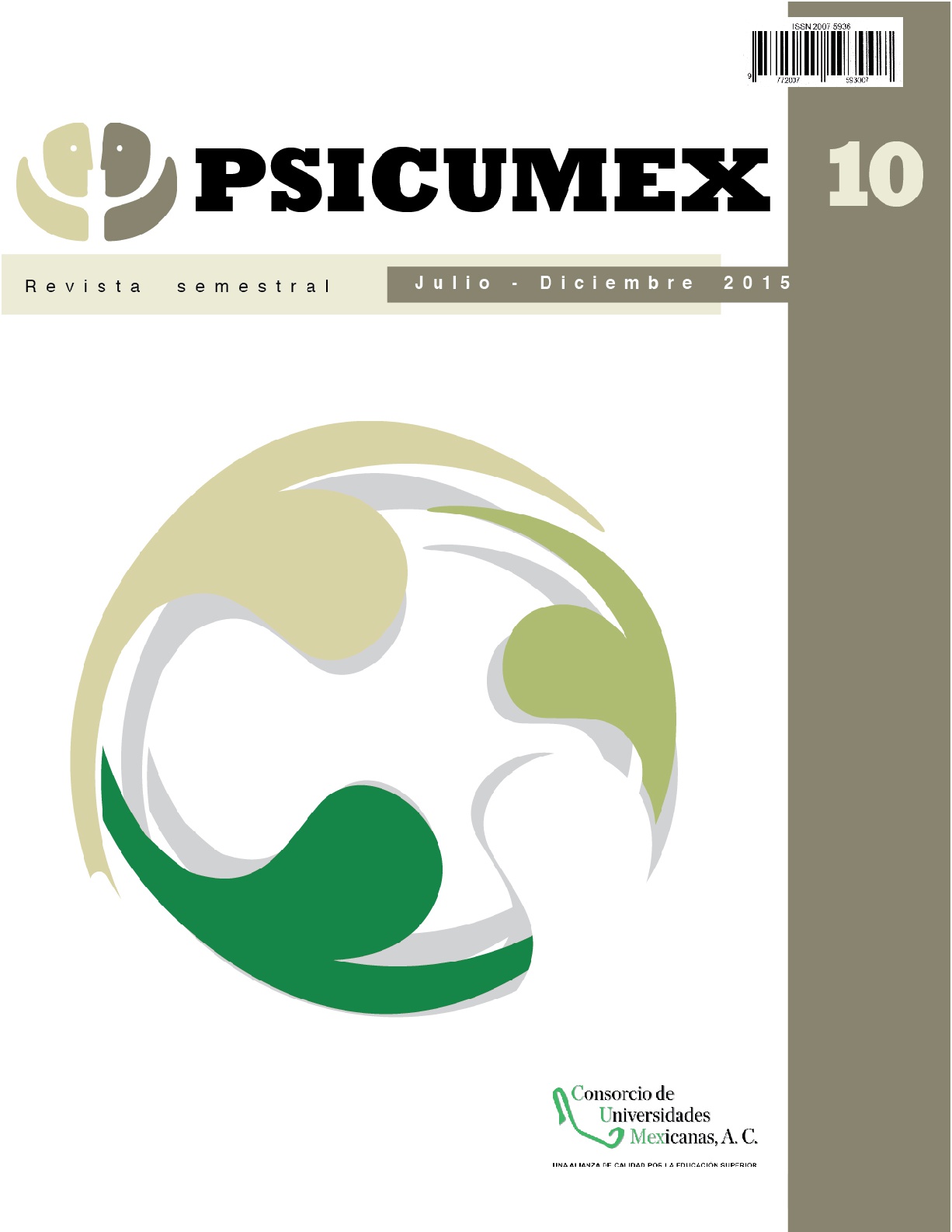Abstract
The quality of life has been approached from socio-economic approaches that highlight the dimensions of well-being and ability as two axes prevailing theoretical and conceptual discussion. However, from a psychological view, this paper established the reliability and validity of an instrument that measured eight factors indicative of sociopolitical dimension of quality of life. For this purpose, we conducted a cross-sectional study with a probabilistic sample of 245 students. Therefore, life satis- faction (alpha = 0.72; 45% of the explained variance), expected capacity (alpha = 0.74; 37%), trust relationships (alpha = 0.79; 33%), perception justice (alpha = 0.74; 31%), expectations of opportunity (alpha = 0.78; 27%), environmental assessments (alpha = 0.75; 25%), context rules (alpha = 0.71; 23%) and perceived resources (alpha = 0.75; 21%) were established as indicative factors of sociopo- litical dimension of quality of life [KMO = 6.25; chi-square = 14.25 (23 gl) p = 0.000]. Regarding the state of knowledge that has weighed directly to the quality of life from the subjective well-being and economic capabilities, the findings of this study were discussed to explain a scenario of economic and social crisis to which governors and governed react asymmetrically.
References
Aristegui, I., & Vázquez, M. (2013). El impacto del estigma y la discriminación en la calidad de vida de personas transgénero viviendo con VIH. Hologramática, 19, 5-30.
Baldi, G., & García, E. (2010). Percepción de la calidad de vida en una muestra de individuos de la ciudad de San Luis, Argentina. Universidades, 40, 17-26.
Barranco, C., Delgado, M., Melin, C., & Quintana, R. (2010). Trabajo social en vivienda: Investigación sobre la calidad de vida percibida. Biblio, 2, 102-113.
Benites, L. (2010). Autismo, familia y calidad de vida. Cultura, 24, 1-20.
Cimren, E., Bassi, A., & Fiksel, J. (2010). T21– OHIO, a system dinamics approach to policy assessment for sustainable development: A waste to profit case study. Sustainability, 2, 2814-2832. doi: 0.3390/su2092814
Dale, A., Ling, C., & Newman, L. (2010). Community, vitality: The role of community level resilence adaptation and innovation in sustainable development. Sustainability, 2, 215- 231. doi: 10.3390/su2010215
Derya, K. (2012). Genders differences on perceptions of employee quality for working life indicators in five star hotels in Turkey. International Journal of Academic Research in Accounting, Finance and Management Sciences, 2, 195-203.
Ercey, I. (2012). Perceived quality of life as sustainable development face. Journal of Security and Sustainable Issues, 2(2), 19-30. doi: 10.9770/jssi.2012.2.2(2)
Grimaldo, M. (2010). Adaptación de la Escala de Calidad de Vida de Orson & Barnes para profesionales de la salud. Cultura, 24, 1-20.
Hansmman, R. (2010). Sustainability learning: An introduction to the concept and its motivation aspect. Sustainability, 2, 2873-2897. doi: 10.3390/su2092873
Helliwell, J., & Barrington, C. (2010). Viewpoint: Measuring and understanding well being. Canadian Journal of Economics, 43(3), 729-753.
Kopnina, H. (2012). Evaluation education for sustainable development: Using ecocentric and anthropocentric attitudes toward the sustainable development scale. Environmental Development and Sustainability, 14 (4), 1-17. doi: 0.1007/s10668-012-9395-z
Machado, A., Anarte, M., & Ruiz, M. (2010). Predictores de la calidad de vida en pacientes con diabetes mellitus tipo 1. Ciencia y Salud, 21, 35-47.
Martems, P., & Raza, M. (2010). Is globalization sustainable? Sustainability, 2, 280-293. doi: 10.3390/su2010280
Matyasik, M. (2014). Secure sustainable development: impact of social media on political and social crisis. Journal of Security and Sustainability Issues, 4(1), 5-16. doi: 10.9770/jssi.2014.4.1(1)
Partidario, M., & Belchior, C. (2010). Can new perspective on sustainability drive lifestyle? Sustainability, 2, 2849-2842. doi: 10.3390/ su2092849
Sadeghzadeh, V. (2012). Improved quality of life with cardiac rehabilitation in post myocardial infarction patients. International Re- search Journal of Applied and Basic Sciences, 3, 394-401.
Tariq, Q. (2012). Impact of financial stress on life satisfaction. Asian Journal of Social Science & Humanities, 1, 139-148.
Uduma, K., & Arciszewski, T. (2010). Sustainable energy development. The key to stable in Nigeria. Sustianability, 2, 1558- 1570. doi: 10.3390/su2061558
Vázquez, M., & Portales, L. (2014). La empresa social como detonadora de calidad de vida y Desarrollo Sustentable en comunidades rurales. Pensamiento y gestión, 37, 255-284.

This work is licensed under a Creative Commons Attribution-NonCommercial-NoDerivatives 4.0 International License.
Copyright (c) 2015

